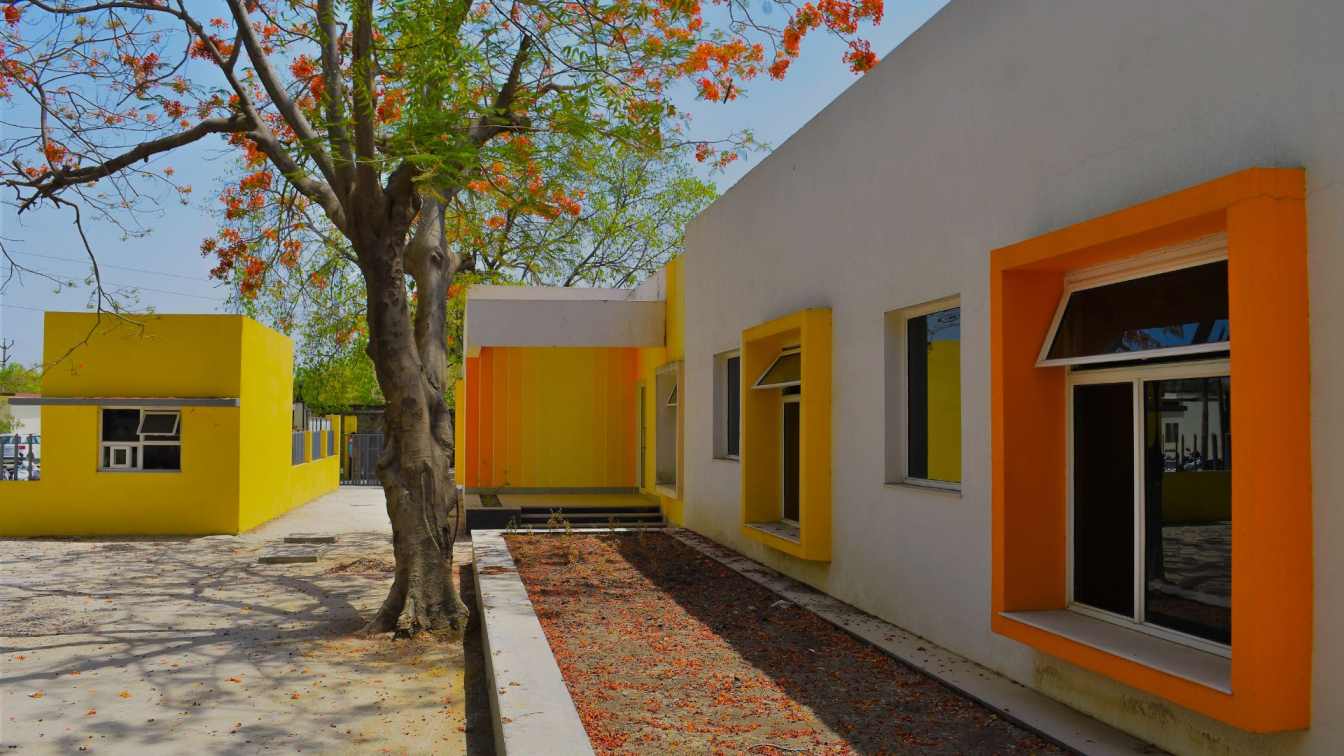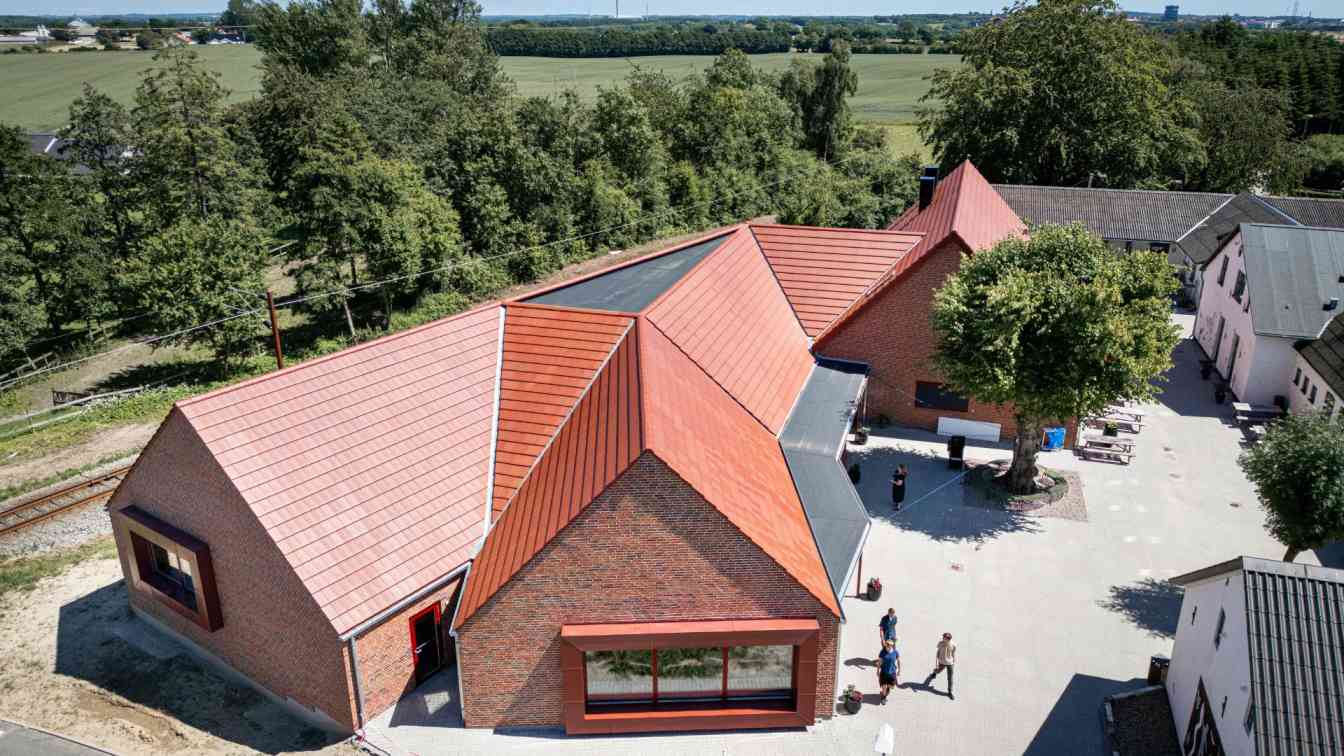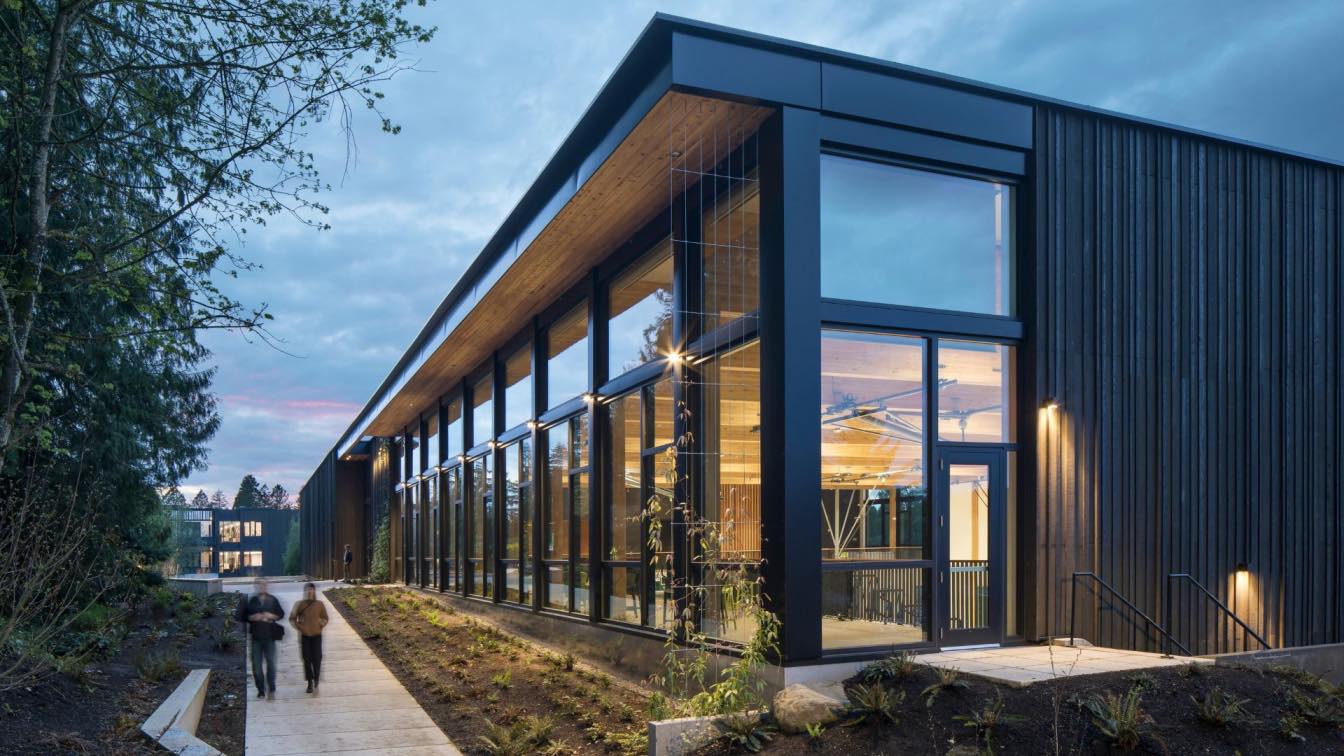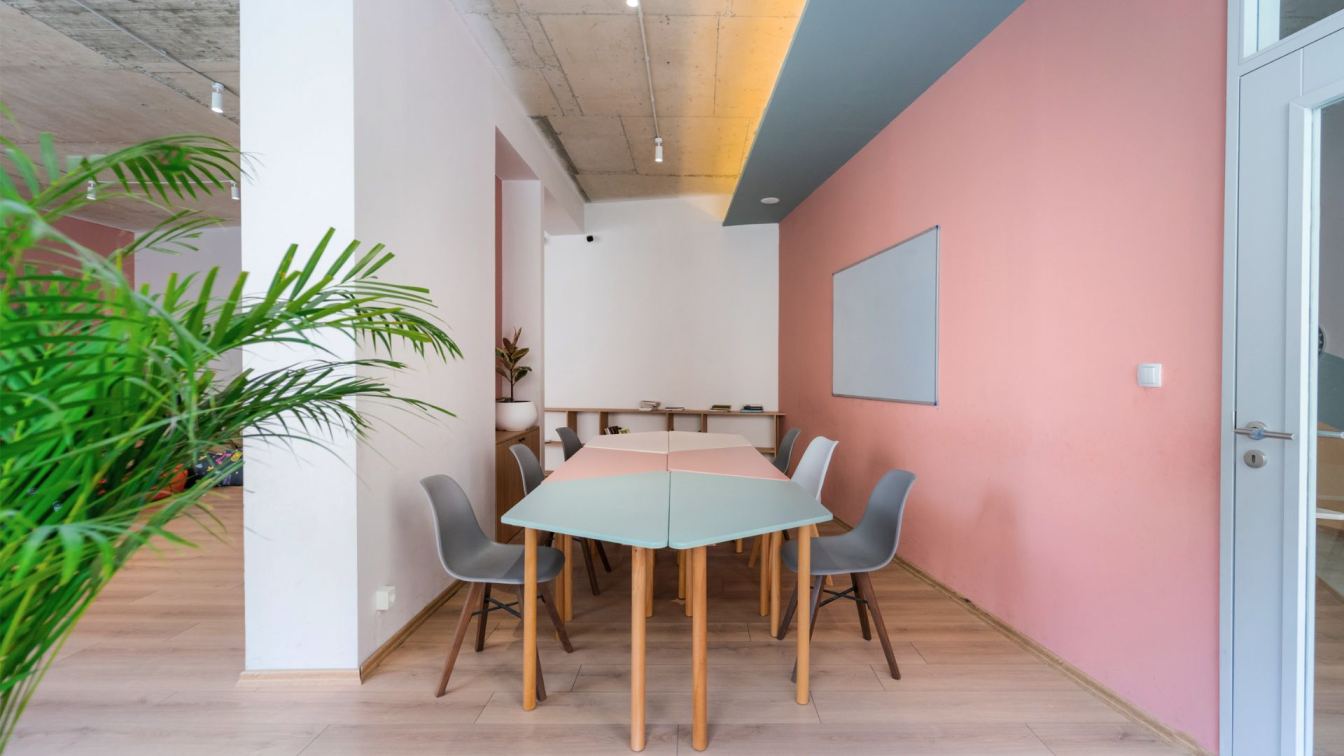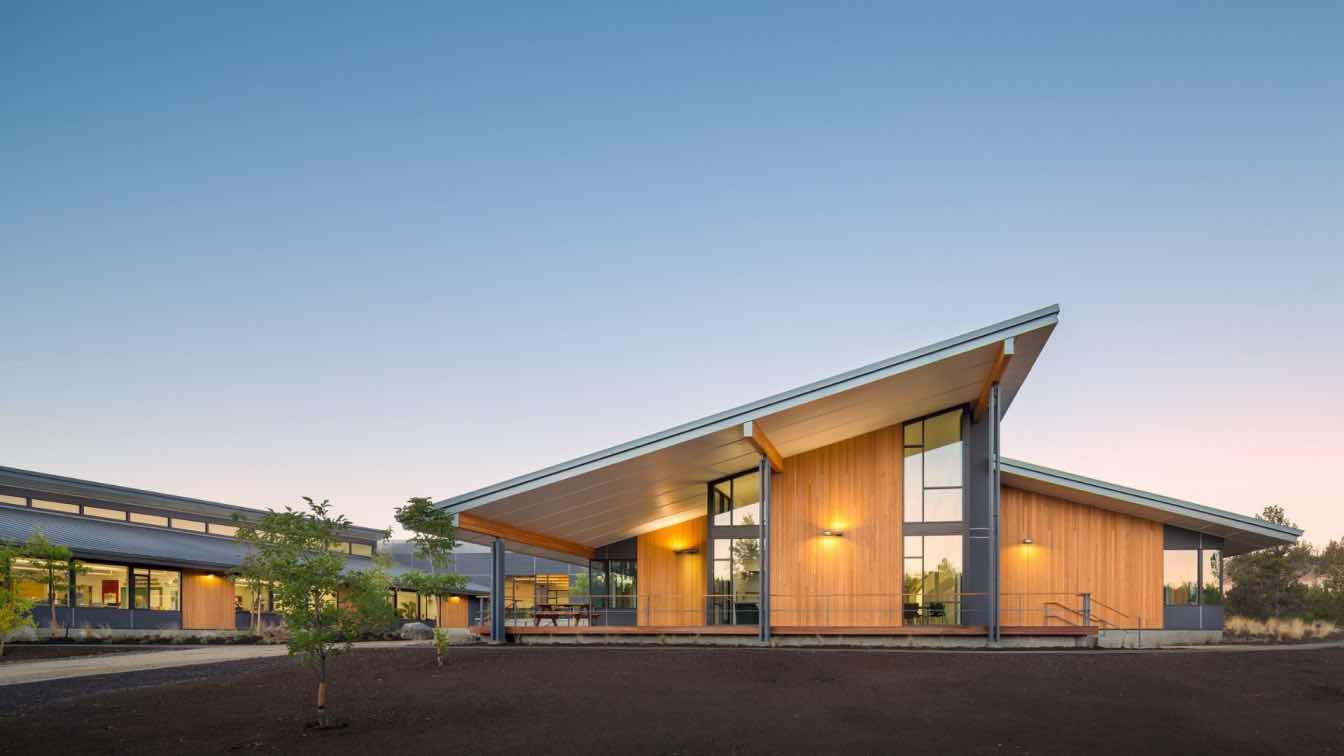The Adaptive Re-Use of a K-12 Institution in Rajasthan
The architectural identity of Rajasthan is largely characterized by historic masonry structures highlighting a deep and enduring material culture. Among these, a post-independence educational institution, built with rubble masonry, stands as a symbol of resilience and functional pragmatism. Built by JK Cement Organization in the 1960s as part of their cement plant and colony in the remote village of Nimbahera, around 100km from Udaipur. R+D Studio was engaged to re-look at the entire masterplan and propose a phase wise solution and in doing so, the fundamental question posed was:
How can a historic structure's utility be extended without compromising its intellectual and cultural integrity? How does architecture reconcile the historical with the contemporary without falling into visual discord? R+D Studio's intervention inhabits this in-between space, leveraging adaptive reuse as both a strategic method and a guiding philosophy.
A K-12 educational institution is not a fixed entity but a dynamic system that evolves over time to accommodate shifting educational and spatial demands. In this case, the original layout included an outdated bachelor’s accommodation within the primary structure—an inefficient use of space that required strategic reconfiguration. The design intervention was executed with precision: the dormitory functions were removed, and the spatial framework was reorganized to integrate a new primary wing. Rather than merely extending the existing structure, this addition functions as a graft, skillfully bridging historical continuity with contemporary necessity. The addition of a new architectural volume requires more than simple adjacency—it necessitates a deliberate combination of form and function.

The new wing does not assert itself as an independent structure but integrates seamlessly into the existing architectural language. This continuity is achieved through a carefully planned circulation strategy that fosters spatial fluidity. Movement between the historic and contemporary sections of the school is orchestrated to minimize disruption, with the new wing serving as a hinge that unites different sequential and spatial elements into a cohesive whole. Material continuity is fundamental to bridging the historical and the contemporary.
The selective use of local Nimbahera slate stone, stucco, and historically consistent paint formulations ensures that the new intervention aligns with the architectural character of the original structure. This approach is not an act of replication but a deliberate engagement with material as a prompt, allowing the new wing to blend seamlessly into its environment. By embedding the intervention within the existing tectonic language, R+D Studio crafts a built environment that avoids historical dis-junction.
Adaptive reuse extends beyond aesthetic considerations into the realm of sustainable architectural ethics. Rather than erasing embodied energy through demolition, this project prioritizes recalibration and renewal. The intervention amplifies the latent potential of the existing structure, ensuring that the addition does not impose an external architectural vocabulary but instead emerges from the intrinsic logic of site and history.

R+D Studio’s intervention is neither a nostalgic replication nor a radical departure but an act of architectural authorship—an ongoing process of rewriting, refining, and expanding the built environment. Recognizing architecture as a dynamic manuscript rather than a static artifact, the project underscores the idea that historical structures should not be preserved in stillness but engaged in active dialogue. The new primary wing is an argument for the past as a living entity, continuously evolving through thoughtful architectural discourse and intervention. Thus, the school does not merely endure; it transforms, asserting itself as an evolving architectural continuum rather than a static monument to its past.
R+D Studio based in Gurgaon designing a new primary wing in an existing K-12 school built with rubble masonry in Rajasthan, they re-designed the programmatic arrangement of the existing school to move out the existing bachelor’s accommodation and creatively add the new wing to connect the two. This adaptive re-use provided a sustainable solution which was seamlessly integrated both spatially and architecturally. The choice of materials, like local slate stone, paint and stucco ensured that the architecture also matched the two blocks even though they were built 65 years apart.























